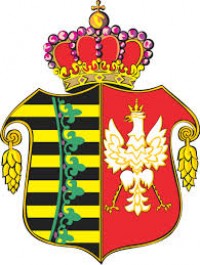Chrzanów

Informacja na stronie w jᶒzyku angielskim
Chrzanów
1. Background
50°08' N, 19°24' E
Chrzanów is a village in southern Poland. 40,880 people lived there in 2002. It is part of the Małopolska district since 1999. During the Second World War it belonged to Galicja. Between June 1940 and March 1941 part of the Jews from Oświęcim were transported to Chrzanów to enable the construction of the Auschwitz camp.
2. From the Encyclopedia of the Ghettos – courtesy Yad VaShem
Chrzanów
Place before the war: A city in the Kraków district, Poland
Place during the war: Upper Silesia
Between the two World Wars, 6,300 Jews lived in the city - half its population. They made their living through small industry, especially the garment industry, crafts and trade. After World War I, the joint and other Jewish funds helped the Jews in the city. There were a bank, a charity fund and credit association as well as other traditional welfare and charity organizations. Boys were brought up in Talmud Torah and the girls studied at Beith Jaacov founded by Agudat Yisrael. The Tarbut (Culture) branch conducted Hebrew lessons, had a choir and a music association. There were active parties and Zionist youth movements in Chrzanów that established a Zionist kibbutz training, Hebrew courses, ran libraries and drama groups, where the Bond, Agudat Yisrael, youth movements and women's groups were active. A Maccabi sports group was active there as well.
To continue reading (in Hebrew), Click here for the Encyclopedia of the Ghettos in the Yad Vashem site
3. Courtesy of the "Beit Lohamei Hagetaot" (Ghetto Fighters' House)
The city of Chrzanów is situated in the south-west of Poland, on the Silesia border. The beginning of the Jewish settlement in the city dates back to the 17th century. There were about 5,500 Hews in the city at the turn of the 20th century – half the city population. The city was under the jurisdiction of the Austro – Hungarian empire until World War I and the Jews enjoyed a full Civil Equality. Half the city council's delegates were Jews. All city Jews played an active role in the cultural and economical development. Especially famous were the Lewenfeld's. The main road in the city is called after their son:" Eliya Henrik".
The First World War hit the city's Jewish community badly. Families that fled during that war returned poor refugees. Many of them were killed or wounded in service. After the war, with the renewal of the Polish regime, the community was in another economical and social crisis. Being subjected to pogroms and looting by their Polish neighbors.
The community was rehabilitated with its educational institutions, Talmud Torah, synagogues and charity fund with the help of the Joint and the Jewish Rescue Committee in Kraków.
The development of modern industry assisted with the economical rehabilitation.
There were numerous Zionist Organizations in Chrzanów prior to the Holocaust, in the frame of which active cultural activity took place including Hebrew courses and various other classes.
To continue reading (in Hebrew), Click here for the "Beit Lohamei Hagetaot" site
Artykuły powiązane
- 4. Click here for info about Chrzanów at the Wikipedia site
- 5. Click here to the site in Polish describing cemeteries in Chrzanów
- 6. Click here for much info at the JewishGen site about Chrzanów
- 7. Click here for Chrzanów Book at the JewishGen site
- 8. Click here for The Chrzanów Book (in Yidish) at the New York Public library
- 9. Click here for the SHTETL site – History, cemeteries and synagogues in Chrzanów











